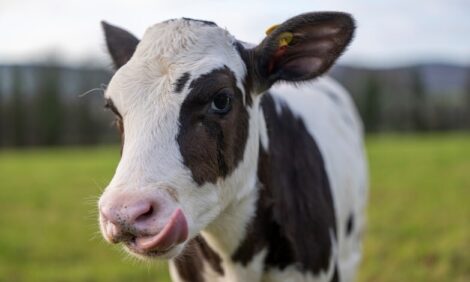



Republic of Korea - Livestock and Products Semi-Annual 2010
While beef production has been lowered since Korea's farmers continue to delay marketing their animals, the increase in pork production has been larger than expected, according to Yong Keun Ban and Michael G. Francom in the latest GAIN Report from USDA Foreign Agricultural Service.Report Highlights
Although cattle inventories are up in 2010, beef production has been lowered since farmers continue to delay marketing their animals. This tightening in domestic production is expected to drive-up demand for imported beef. The US beef import estimate is raised to 110,000 MT. Meanwhile, the larger than expected increase in pork production has pushed the pork imports down more than 100,000 MT to 343,000 MT. The US pork import estimate is lowered to 100,000 MT.
Production
Animal Numbers, Cattle
The Korean government has started providing data on the number of beef and dairy cows that are old enough to become pregnant. Post previously had to extrapolate these figures using the number of one-year old heifers. The dairy and beef cow beginning stocks for 2009 and 2010 have been revised to reflect this change. This revision, however, does not impact production since the calf crop is a residual number.
Strong demand for domestic beef and smaller than expected calf production put upward pressure on cattle prices in 2009. As prices soared during the second half of last year, farmers held off marketing their animals since they were gambling that prices would climb even higher. In addition, farmers were in no hurry to sell since animals on feed 30+ months generally grade out higher, which means higher profits when they go to market. Their bet paid off. The price of a fully grown steer for slaughter jumped from 3.8 million won (about $3,300) in June 2009 to 5.8 million won (about $5,000) by the end of the year (table below).
Longer feeding periods pushed the 2009 average slaughter weight from 619 to 630 kilograms. These heavier animals tended to receive higher grades. In fact, this trend is evident in the grade trend data for 2009 (table below), where the percentage of animals receiving the three highest grades (1++, 1+ and 1) grew from the previous year.
Cattle prices are expected to remain strong during 2010 in large part due to continued robust demand for domestic beef. In response to higher prices, farmers are expected to slightly raise calf production to 1.03 million head, but at a marginally slower pace than was previously forecast.
Production is expected to gradually level off in the near future as farmers become more cautious about any possible price drop due to over-supply. In fact, the Korea Rural Economic Institute (KREI), a government think-tank, is warning that the cattle inventory will peak in 2011 and then begin contracting. This is one reason the Ministry for Food, Agriculture, Forestry and Fisheries (MIFAFF) has begun exploring measures, such as revising the grading standards, to encourage farmers to reduce their herd size. The plans to revise the grading system will be discussed later in the report.
Slaughter in 2009 was lower than expected at 815,000 head since farmers held-off marketing their animals because they expected prices to continue to climb. The slaughter numbers for 2010 are revised downward to 876,000 head because the inventory of cattle over 1-year old started leveling-off last September.
Ending inventories in 2010 are forecast higher at 3.2 million head since the slight increase in calf production will more than offset the projected increase in the number of animals slaughtered.
The Korean government has established a working level committee to revise the existing beef grading system, which is overly focused on maximising marbling. The committee’s goal is to develop a more balanced grading system that provides incentives to farmers to slaughter their animals earlier at around 27 months, instead of the traditional 30+ months. This type of system would be more environmentally friendly as it would help curb cattle methane emissions and reduce livestock production costs since less feed would be used.
In the meantime, though, Korean cattle producers will continue to feed their animals as long as possible in order to maximize marbling, which means higher profits when they send the animal to slaughter. In fact, as can be seen from the following table, the average price of the highest grade animal (1++) was 47 per cent higher than the average price of the lowest grade animal (3).
Meat, Beef
Beef production has grown for the six consecutive years and finished at 267,000 metric tons in 2009. Production last year was expected to grow even higher, but slipped slightly because farmers held onto their animals longer in hopes of higher profits. Although the domestic beef production will continue to grow in 2010, it will be at a slower rate than initially projected as farmers are expected to continue feeding their cattle as long as possible.
The smaller than expected increase in production in 2009 kept domestic beef prices high throughout the year. Although imported beef prices also climbed during this period, imported beef was still more affordable than domestic beef. In fact, a Hanwoo loin cut, which is one of the more popular cuts, was on average 1.8 times more than the same cut of imported beef in 2009.
This price difference combined with improved macroeconomic conditions has spurred increased demand for imported beef. More on the economic situation follows. Beef imports finished out the year higher than expected at 314,000 metric tons, with US beef accounting for 83,000 metric tons, 26 per cent of the total.
Meanwhile, the Korean press is reporting that beef imports were down by 12 per cent in 2009. However, this press report is based on quarantine inspection numbers, which are lower because they do not account for the sizeable volume of US product that passed quarantine inspection in late 2008, but was not presented for customs clearance until 2009.
Total consumption last year was 545,000 metric tons, of which about half was imported beef. The overall economic recovery during the last quarter of 2009 pushed both domestic and imported beef consumption higher than expected. Contrary to the conventional wisdom, Korea’s annual GDP growth rate reached 0.2 per cent. In the fourth quarter, though, GDP grew by a whopping six per cent compared to the same quarter in 2008. The growth in this final quarter shows that the economy was on a solid track towards recovery.
Consumption of domestic beef continues its upward trend due to a variety of factors, including beef traceability, country-of-origin labeling in restaurants and butcher-shop style restaurants. According to the results of a KREI survey, which was released in January of this year, 70 per cent of the respondents replied that they had eaten at a butcher shop style restaurant.
In December 2009, the US Meat Export Federation (USMEF) kicked-off a “Trust Campaign” to rebuild consumer confidence in US beef. The campaign includes television and newspaper ads, and other promotional activities. This campaign combined with the aggressive marketing efforts of major hypermarkets has shown promising results. In fact, during a one week promotional event in January at E-mart, the largest hypermarket in Korea, the share of US beef sold jumped to 59 per cent of all imported beef that was sold, compared to an average of 30 per cent during 2009.
These continued promotional efforts will help push the demand for US beef higher than previously expected in 2010. The import estimate for US beef in 2010 has been raised to 110,000 metric tons. There is one factor, however, that could hinder potential growth in US beef imports this year and that is the shortage of certain popular cuts, such as short ribs and loin meat, due to strong demand from other countries.
Production
Animal Numbers, Swine
Swine inventories were falling through most of 2009 because of high compound feed prices. In some cases, smaller sized operations temporarily stopped raising pigs. However, this trend reversed course as feed prices started to soften during the latter half of the year. In September, inventories started to expand as these growers returned to business. In fact, the number of swine farmers increased by 300 from June to December and finished the year at 8,000.
As these farmers returned, the total herd size increased more than half a million head from 8.18 million in June to 8.72 million at the end of 2009. This increase in inventory put some downward pressure on carcass prices during the last quarter. However, farmers kept expanding inventories since the drop in feed prices more than offset the decrease in the carcass price (chart below).
The 2010 production estimate was raised to 15.1 million head in large part due to the higher than expected carry-over stocks. However, as the implementation of the Korea-EU FTA draws closer, farmers will become more cautious about increasing production in the future. In addition, the prospects of higher feed prices and manure disposal costs will keep 2010 production and inventories in check.
In response to the H1N1 outbreaks in North America in April 2009, Korea banned live swine imports, including breeding stock, from North America. The ban was finally lifted after 6-months in October 2009. Several shipments of US live swine have cleared inspection since the market was re-opened. Live swine imports are expected to double to 2,000 head in 2010 as farmers replenish their breeding stocks. The majority of these swine will be imported from the United States and Canada.
Meat, Swine
Expanded swine inventories will push domestic pork production above the previous estimate to 1.1 million metric tons in 2010. But, as was mentioned earlier, pork production is projected to level-off as we get to closer to the implementation of the Korea-EU FTA.
Higher production was the main factor behind lower than expected imports last year to 383,000 metric tons. Detections of H1N1 and country of origin labeling requirements were also minor factors pushing imports down. Pork imports during 2010 have been lowered to 343,000 metric tons, down 100,000 tons from the previous estimate because of strong domestic production. The US pork import estimate for 2010 was revised down to 100,000 metric tons.
The findings of H1N1 briefly caused pork consumption to decline in April 2009. According to a survey conducted by the Korea Rural Economic Institute (KREI) shortly after H1N1 was reported in Korea, roughly 43 per cent of respondents indicated that they would reduce their pork consumption or stop eating pork.
In contrast, several cases of Foot and Mouth Disease (FMD) in January 2010 had very little impact on total pork sales. According to a survey done at Hanaro Mart, a local hypermarket chain, pork sales actually picked-up after the most recent FMD cases because consumers were informed about the safety of eating pork after the previous outbreaks in 2000 and 2002. The survey results follow.
With that said, the 2010 pork consumption estimate is expected to remain largely unchanged at 1.5 million metric tons as the fear over H1N1 dissipates and the Korean economy continues to pick-up steam.
Although, the FMD outbreak did not impact the domestic sale of pork, it did impact pork exports. Japan, Philippines and Thailand have responded to these cases by closing their markets to Korean pork. As a result, the pork export estimate for 2010 has been cut to zero. This stoppage in trade, however, will have a negligible impact on the overall pork complex because the volume of pork exports is very small, averaging 17,620 metric tons over the last decade.
Further Reading
| - | You can view the full report by clicking here. |
March 2010


